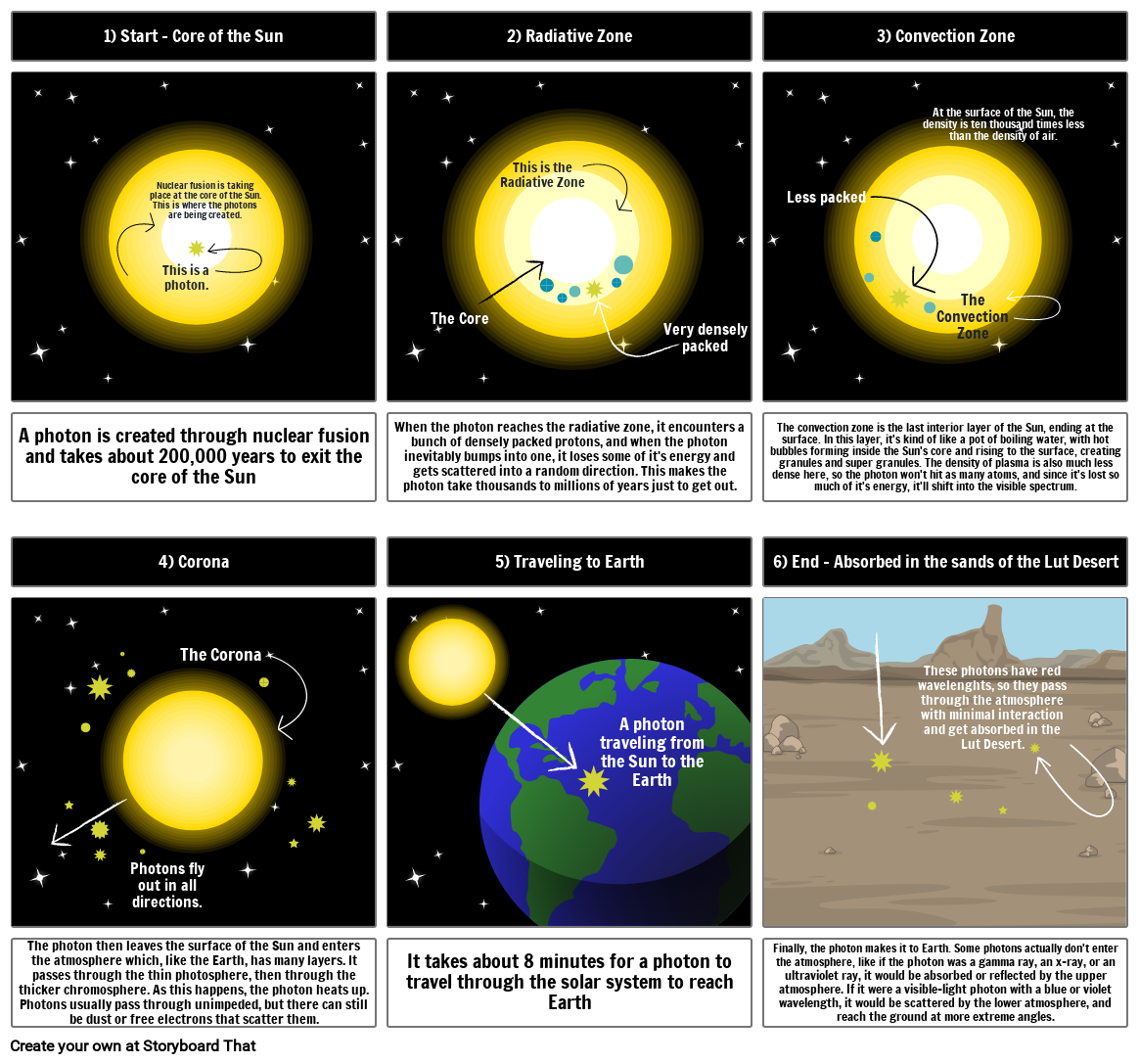Mapping a Photon of Light

Storyboard Text
- 1) Start - Core of the Sun
- Nuclear fusion is taking place at the core of the Sun. This is where the photons are being created.
- This is a photon.
- 2) Radiative Zone
- The Core
- This is the Radiative Zone
- Very densely packed
- 3) Convection Zone
- Less packed
- At the surface of the Sun, the density is ten thousand times less than the density of air.
- The Convection Zone
- A photon is created through nuclear fusion and takes about 200,000 years to exit the core of the Sun
- 4) Corona
- The Corona
- When the photon reaches the radiative zone, it encounters a bunch of densely packed protons, and when the photon inevitably bumps into one, it loses some of it's energy and gets scattered into a random direction. This makes the photon take thousands to millions of years just to get out.
- 5) Traveling to Earth
- The convection zone is the last interior layer of the Sun, ending at the surface. In this layer, it's kind of like a pot of boiling water, with hot bubbles forming inside the Sun's core and rising to the surface, creating granules and super granules. The density of plasma is also much less dense here, so the photon won't hit as many atoms, and since it's lost so much of it's energy, it'll shift into the visible spectrum.
- 6) End - Absorbed in the sands of the Lut Desert
- These photons have red wavelenghts, so they pass through the atmosphere with minimal interaction and get absorbed in the Lut Desert.
- The photon then leaves the surface of the Sun and enters the atmosphere which, like the Earth, has many layers. It passes through the thin photosphere, then through the thicker chromosphere. As this happens, the photon heats up. Photons usually pass through unimpeded, but there can still be dust or free electrons that scatter them.
- Photons fly out in all directions.
- It takes about 8 minutes for a photon to travel through the solar system to reach Earth
- A photon traveling from the Sun to the Earth
- Finally, the photon makes it to Earth. Some photons actually don't enter the atmosphere, like if the photon was a gamma ray, an x-ray, or an ultraviolet ray, it would be absorbed or reflected by the upper atmosphere. If it were a visible-light photon with a blue or violet wavelength, it would be scattered by the lower atmosphere, and reach the ground at more extreme angles.
Over 30 Million Storyboards Created
No Downloads, No Credit Card, and No Login Needed to Try!
